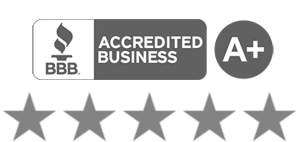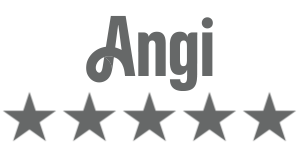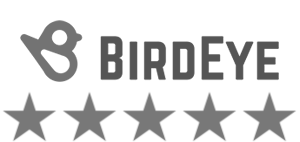Removing harmful substances from homes, buildings, or work sites requires more than just caution. Safety depends on the equipment behind safe hazard removal, as well as the right protocols and trained professionals. In Denver and surrounding areas, specialists use a combination of proven tools and techniques to reduce risk and ensure effective cleanup.
Effective cleanup of mold, asbestos, or chemical contaminants calls for a careful mix of expertise, the proper equipment, and full compliance with safety regulations.
The Specialized Equipment Behind Safe Hazard Removal
Essential Pieces of Equipment for Hazard Removal
To safely remove toxic substances, workers need different types of equipment designed for the job. This might include HEPA vacuums for fine particles, air filtration units, negative air machines, and heavy-duty suction tools.
These tools help remove contaminants effectively from surfaces and the air, preventing spread beyond the work area. Each item is carefully chosen based on the hazard being addressed.
Creating a Controlled Working Environment
Before cleanup begins, the working environment must be controlled. Setting up containment zones with plastic sheeting and sealing off ventilation ensures that harmful materials do not escape to unaffected areas. Air scrubbers and exhaust systems are very important for keeping the environment clean during work. They help stop contamination from spreading outside the work area.
The Role of Personal Protective Equipment PPE
No hazard removal is complete without proper personal protective equipment PPE. This includes respirators, gloves, goggles, coveralls, and safety boots. Each item is selected for the specific risks involved.
For instance, respiratory gear is essential when dealing with airborne particles, while chemical-resistant suits provide a barrier against corrosive substances. PPE is a cornerstone of safety, forming a direct line of defense for workers exposed to potentially hazardous conditions.
Understanding Occupational Safety and Health Standards
Professionals working in this field must follow occupational safety and health guidelines to ensure compliance with national and local regulations. These standards aim to protect workers from harm while maintaining environmental integrity. Following these rules is especially important in cities like Denver, where local codes may require additional protections depending on the type of hazardous materials involved.
Strategies for Reducing the Risk
Specialized cleanup is not just about removal. It is about reducing the risk of future exposure. This involves identifying all contaminated zones, sealing materials properly, and ensuring thorough post-removal testing. Below are common strategies used to limit health hazards during and after removal:
- Isolating the contaminated site with barriers or containment systems
- Using decontamination stations for tools and personnel
- Ensuring proper disposal of collected waste
- Testing surfaces and air to confirm cleanup completion
- Providing ongoing monitoring for recurring exposure risks
Each strategy reinforces the effectiveness of the equipment behind safe hazard removal and supports comprehensive hazard controls to limit danger at every stage.
Using the Right Protective Clothing
Beyond respirators and gloves, protective clothing includes disposable coveralls, chemical-resistant aprons, and footwear guards. This apparel acts as a physical barrier, preventing skin contact with dangerous agents. The clothing must meet regulatory standards and is often replaced or sanitized between jobs to prevent cross-contamination.
Implementing Proven Control Measures
Safe hazard removal depends heavily on reliable control measures. These include air quality monitoring, surface testing, and setting up proper waste disposal routes.
Technicians routinely check and replace HEPA filters. Materials are double-bagged and labeled before disposal. All these steps ensure that nothing is left to chance.
Prioritizing Long-Term Safety
Hazard removal is not just about the moment of cleanup. It is also about long-term safety. This means maintaining clean HVAC systems, regular inspections, and employee health monitoring. Facilities might also install permanent ventilation systems to ensure ongoing air purification, especially in locations with recurring risk.
Addressing Airborne Particles
Many hazards, including mold spores and asbestos fibers, become dangerous as airborne particles. These fine contaminants can linger and travel far, making them hard to control without the proper equipment. Air scrubbers and negative pressure systems are crucial in removing these particles from the environment and preventing respiratory illnesses among workers and occupants.
Handling Hazardous Materials with Precision
From lead paint to chemical solvents, hazardous materials must be handled with precise procedures. Workers follow step-by-step methods to isolate, collect, and dispose of these substances. Special containers, sealed bags, and marked transport bins are used to maintain safety at every stage of the operation.
Identifying Potentially Hazardous Sites
Not all risks are visible. That is why inspection teams assess areas to identify potentially hazardous materials before work begins. Using infrared tools, moisture meters, and air sampling devices, they can detect hidden threats that could pose future risks if left untreated.
Integrating Engineering Controls
One of the most effective ways to maintain a safe site is through engineering controls. These are built-in systems such as sealed barriers, negative air machines, and physical enclosures that limit exposure during work. Such controls reduce the need for manual protective measures and increase the efficiency of cleanup efforts.
Recognizing an Occupational Hazard
Every professional entering this field understands that hazard removal is an occupational hazard in itself. That is why training, certification, and continuing education are critical. Understanding the nature of the risks allows workers to take preemptive action and avoid injury or illness on the job.
Ensuring Maximum Protection
From the equipment to the protocols, every step is about ensuring maximum protection. For Denver-based teams, this means using the latest gear, following local regulations, and conducting thorough site evaluations before and after cleanup. The goal is always complete containment and safety.
Coordinating the Work Area for Efficiency
Organizing the work area efficiently is key to reducing errors and exposure. Here are a few practical steps followed by hazard removal crews:
- Set up signage and barricades to keep unauthorized individuals out
- Establish a clear flow for the movement of personnel and equipment
- Stage tools and protective gear in easy-access zones
- Label waste materials clearly for safe transport and disposal
- Perform walk-throughs before and after the cleanup to ensure completion
Every effort to organize the space helps maximize the impact of the equipment behind safe hazard removal.
Choose the Right Equipment for Safe Hazard Removal
Ultimately, successful cleanup operations in Denver depend on more than just manpower. They require informed decisions and the right equipment for safe hazard removal. From initial site assessments to final testing, every step must be supported by tools, hazard controls, and procedures designed for maximum safety. By using the right gear and following safety guidelines, even dangerous places can become clean and usable again.
Denver Clean-up & Restoration Services
With over 150 years of combined experience, the Colorado Cleanup Services, Inc. team has the knowledge, skill, and commitment necessary to handle any emergency cleanup services you may require. From flood and fire damage restoration to sewage backup and coronavirus cleanup services in Denver, CO, you can always turn to us when you need deep, disinfecting cleaning for your home or business.
Family-owned and operated, our cleaning company is proud to provide the services of trained and certified technicians to all our clients. Our impressive team knows what it takes to return damaged properties to their original condition with the highest level of professionalism. Don’t settle for anything less when you require high-quality disaster recovery services. Our team is available 24 hours a day, 7 days a week to ensure you receive the help you need when you need it. Give us a call: 303-237-4406.





